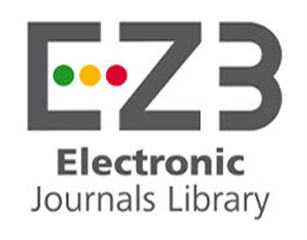RESEARCH OF FEATURES OF TYPICAL MODELS OF PUBLIC ADMINISTRATION
DOI:
https://doi.org/10.32689/2617-2224-2020-3(23)-196-209Keywords:
public administration, models of public administration, style of activity of public authorities, development of public administration systemAbstract
In order for Ukrainian public administration to be able to perform its functions in relation to social transformations of society, it must undergo fundamentally qualitative changes, that shoud be based on new strategies for innovative development of public administration, which are focused on the needs of society and citizens.
The article examines the essence and features of public administration in terms of the process of formation and development of public administration models, and indicates the main characteristics of existing trends and prognostic analysis of the development of public administration models. The current state of development of the public administration system is analyzed and the necessity of its reorientation to the innovative type is substantiated, in particular due to the presence of a set of analyzed negative tendencies. It is noted that the transition from the traditional management paradigm to an innovative type of public administration involves the replacement of a rigid bureaucratic component with an innovative component, which is fully consistent with the task of adapting public authorities to the changing market environment.
The ontological features of public administration models are characterized and the basic principles of innovative development are presented, which are the ideological and democratic basis of public administration. A wide range of innovative tools, approaches to management that can be used in the activities of public authorities in Ukraine are substantiated. The necessity and main essential features of the “ideal model” of public administration, which replaces the already “traditional” models of public administration, which are implemented by the system of public authorities, are indicated and argued.
References
Сьомич М. І. Особливості сучасних моделей публічного управління // Аспекти публічного управління. 2019. Т. 7. № 4. С. 44–51.
Дегтярьова І. О. Інновації в держав- ному і муніципальному управлінні як необхідна умова соціально- економічних досягнень у сучасній Україні // Вісн. Нац. ун-ту цивіль- ного захисту України. Серія: Держ. управління. 2014. № 1. С. 5–11.
Луциків І. В. Дослідження особли- востей інноваційного розвитку сис- теми публічного управління в Укра- їні / І. В. Луциків, О. А. Сороківська, І. В. Котовська // Економіка та сус- пільство. 2017. Вип. 12. С. 124–128.
Оболонский А. В. Кризис эффектив- ности административно-бюрокра- тического государства и поиски выхода: опыт США (эволюция теории и практики государственного управления в последние десятиле- тия) // Вопр. гос. и муниципального упр. 2014. № 2. С. 145–165.
Болотіна Є. В. Сучасні західні кон- цепції управління та моделі публічного адміністрування / Є. В. Боло- тіна, А. В. Нікітенко // Екон. вісн. Донбасу. 2017. № 1. С. 96–100. 6. Гордон М. В. Моделі публічного управління: порівняльний аналіз та пропозиції для України [Електронний ресурс] / М. В. Гор- дон, Н. В. Оленцевич, І. О. Коліс- ник // Електронне видання “Держ. упр.: удосконалення та розвиток”. 2018. Режим доступу: http://www.dy.nayka.com.ua/pdf/3_2018/43.pdf
Устинович Е. С. Современные тео- рии государственного управления: основные концепции и их характе- ристики / Е. С. Устинович, Т. П. Но- викова // Гос. власть и местное са- моуправление. 2011. № 9. С. 16–23.
Орлов И. Б. Современные теоретиче- ские и методологические доктрины (модели) государственной политики и управления // Проблемный анализ и государственно-управ- ленчеcкое проектирование. 2013. Вып. 4. С. 95–104.
Федорчак О. В. Інноваційний механізм державного управління: підходи до формування // Ефективність держ. упр. 2012. Вип. 33. С. 150–157.











